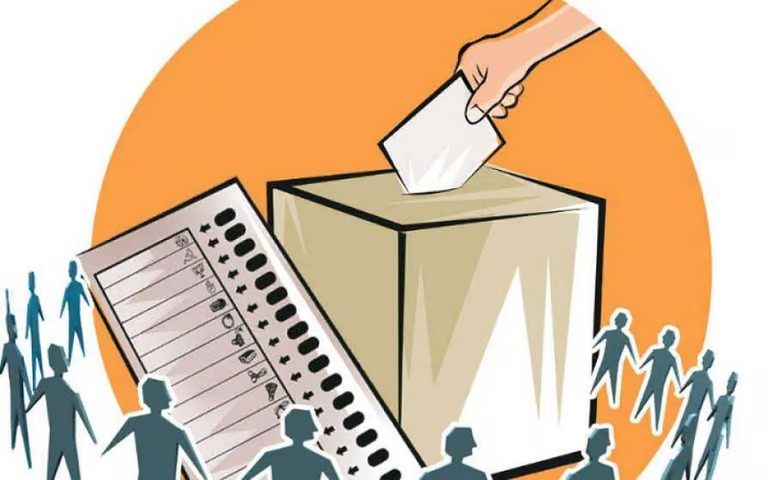
08-12-2023 (Important News Clippings)
To Download Click Here.
North-South, Real Gaps, False Binary
Rural-urban political differences more likely
ET Editorials
The key to southern India’s superior economic performance has been its relative success with population control. It’s also the cause of the region’s deepest fears over losing economic and political weight due to fiscal and electoral systems based on population. The southern states lead in almost all economic and development metrics because of a common market for their industrial goods as well as supply of cheap labour from the agrarian north. To that extent, they are comfortable with a stronger federal structure that taxes uniformly and improves infrastructure to allow business to acquire national scale. But these strengthening tendencies accompany bigger transfer of resources to poorer northern states and would give them a larger political voice when constituency delimitation is resumed after a half-century hiatus. Both processes are constitutional requirements.
Some of the south’s wariness is misplaced. Urbanisation leads to the same effects of increased economic clout combined with political marginalisation. And the north is urbanising faster than the south, in part because of a low base. Since migration is overwhelmingly intra-state, the model of economic development is becoming geographically diversified. The factors contributing to a common market are also driving urbanisation. Constituency delimitation with a third of India’s people living in cities will heighten rural-urban political differences rather than a ‘north-south divide’.
It would be in the interest of the southern states to push their economic advantage to pull up the northern laggards. India’s federal structure has been alive to the former’s cultural and political concerns, and that has resulted in their overachievement. They are now free to export their development model. Growth rates among states are expected to even out with greater market integration domestically and with the rest of the world. This would de-emphasise culture-specific models successful at select points of a nation’s economic development.
India’s growing neighbourhood dilemmas
Most South Asian states are sceptical of India’s primacy in their own ways.
Happymon Jacob teaches at the Jawaharlal Nehru University, New Delhi, and is the founder of the Council for Strategic and Defense Research.
The proverbial Achilles heel of Indian foreign policy continues to be its neighbourhood. Contemporary Indian foreign policy has an ambitious vision — from being the leader of the global South, to be an arbiter in global geopolitical contestations, to making a serious claim to be a pole in world politics. But South Asia is not only not keen to jump on the bandwagon of the India story, but it is also seemingly holding India back, albeit indirectly. Neighbourhoods are difficult for any major power, but contemporary India is faced with an exceptionally hard one, complicated by a rising superpower in its neighbourhood, for the first time in its history.
New Delhi’s dilemmas, the causes
In general, there are three types of dilemmas that India faces in the neighbourhood. One, the rise of politically anti-India regimes in South Asia such as the one in the Maldives where the new government is effectively asking Indians to pack up and leave. While the Maldives is anti-India in an instrumental sense, a Khaleda Zia-led government in Dhaka, which goes to the elections early next year, could turn out to be ideologically anti-India. The second type of dilemma India faces in the neighbourhood is structural, resulting from Beijing’s growing influence in South Asia.
Three things stand out. The growing entanglement of the region’s smaller states in the Belt and Road Initiative (BRI) and other Chinese projects. Beijing’s assiduous outreach to South Asian states when the rest of the international community abandons or avoids them for normative or other reasons — as was the case with Taliban-led Afghanistan, military-ruled Myanmar and crisis-hit Sri Lanka. India does too, but the overall impact of China’s outreach is far higher than that of India primarily as a function of deeper pockets. Finally, China’s desire to settle border disputes with its neighbours (minus India), as seen in the case of Bhutan, is also a strategy to win over the region.
The net result, or one that could potentially develop overtime, is somewhat alarming. If we do not take innovative measures, there is a good chance that we will be geopolitically locked in within an unfriendly South Asia. This may well be a case of overstating the point, but is to lay emphasis on a potential future scenario.
There are three broad sets of causes behind the dilemmas India faces in the neighbourhood. The first is the regional geopolitical architecture characterised by five overlapping elements. Contemporary South Asia is characterised by a diminishing presence of the United States, which, for a long time, was a geopolitical constant in the region. For New Delhi, Washington’s presence in South Asia was not always advantageous, but its departure is definitely disadvantageous, in particular given how China has filled the power vacuum created by Washington’s departure. The aggressive and stupendous rise of China has come as a ‘geopolitical buffer’, at least for now, for the smaller states in the region which have become adept at using the ‘China card’ in their foreign policy assertions. While our neighbours are keen to practise strategic autonomy with us, there is little appetite to do so vis-à-vis China.
Third, in one of the least interconnected regions in the world, and poor, it is natural that the inhabitants of the region will tilt towards a power with the ability to cater to their material needs. With India’s ability to meet those needs being limited, China is that power. Fourth, India, for the most part, has had a normative and political approach towards the region, with the states in the region acquiescing, rebelling, and falling in line given the absence of choices. Beijing has changed that India-centric calculus by offering itself as the no-frills non-normative alternative. For the first time in modern South Asian history, the region is a ‘norms-free-zone’.
Finally, for much of its independent existence, New Delhi enjoyed unrivalled primacy in the region. Today, the downside of being the resident power in South Asia — with all its attendant cultural, ethnic, refugee and other spillovers — is felt more sharply than being the primary power. China, on the other hand, is the region’s non-resident power which benefits from the absence of complications — ethnic, linguistic, religious — arising out of being a resident power.
The second cause behind India’s regional dilemma is related to its policy stance which exhibits a deep-seated status quo bias when it comes to dealing with the region’s domestic politics and the multiplicity of actors/power centres therein. Dealing only with, for the most part, those in power in the regional capitals, elected or otherwise, is perhaps the right thing to do as well as less risky. However, such a one-track policy generates path-dependencies often alienating other centres of power or opposition leaders. Bangladesh is perhaps one such example.
Furthermore, India’s dilemmas are also caused by two mistaken assumptions that we have long held. For one, there has, for some time, been a strong belief in India that South Asia minus Pakistan would be amenable to Indian geopolitical reasoning which prompted an attempt to deal proactively with South Asia without Pakistan. However, in retrospect, one has to admit that this policy has not exactly panned out that way India imagined. The second (mistaken) assumption that New Delhi approached the neighbourhood with was that India’s special relationship with the region rooted in culture, soft power, history and ethnicity would help the country deal with the neighbourhood better than those without intimate knowledge of the region, namely China. Has India’s culture-connect with its neighbours indeed become a liability in the conduct of foreign policy towards them?
What can be done
To begin with, it is time India made a mental switch and acknowledged that South Asia and its balance of power have changed fundamentally. Old South Asia where India enjoyed primacy no longer exists. ‘Southern Asia’ which has pretty much replaced South Asia is a space where China has emerged as a serious contender for regional primacy. India’s neighbours and periphery are China’s too, even if we do not like it. Such a realistic and pragmatic framing would help India deal with the reality as it is rather than working with the mental frame of Indian primacy which is long gone.
Second, New Delhi must proactively pursue the involvement of friendly external actors in the region. That is the only way to deal with the impending possibility of the region becoming Sino-centric.
Third, Indian diplomacy must be flexible enough to engage multiple actors in each of the neighbouring countries. The art of diplomacy is not about hating the anti-India elements in the neighbourhood, but, instead, lessening their anti-India attitude. In a similar vein, dealing with whoever is in power is a good policy, but engaging only those in power is bad policy.
Finally, here is the highlighting of an issue that has been spoken of ad nauseum — India needs more hands for its diplomatic pursuits. The glaring shortage of sufficient diplomats to implement the foreign policy of a country of 1.4 billion people will prove to be India’s single most crucial challenge going forward. The more India’s role in world affairs grows, the more the shortage of personnel will be felt by us and others. If the current state of affairs continues, there will be no one to show up with the Indian flag when opportunities beckon or crises emerge.
 Date:08-12-23
Date:08-12-23
सतत सामाजिक संकट
संपादकीय

महिलाओं के लिए असुरक्षित माहौल ही उन्हें श्रम शक्ति में शामिल होने से रोकता है। यह बात भी देश की कमजोर श्रम शक्ति भागीदारी दर के लिए जिम्मेदार है। एनसीआरबी के आंकड़े बताते हैं कि समस्या की शुरुआत भारतीय परिवारों में ही होती है जहां पति या रिश्तेदारों की क्रूरता 31.4 फीसदी मामलों की प्राथमिक वजह है। हालांकि यह विशिष्ट अपराध के मामले में दहेज विरोधी कानूनों को सख्त बनाने की तत्काल आवश्यकता है लेकिन इसके साथ ही यह महिलाओं को वस्तु समझने के सामाजिक रूढ़िवादी दृष्टिकोण को भी दर्शाता है। लब्बोलुआब यह है कि ऐसे रवैये में पुरुष नौकरी या करियर के मामले में परिवार की महिलाओं की वित्तीय या सामाजिक स्वतंत्रता को प्रोत्साहित करने की प्रवृत्ति नहीं रखते। यह पुरुषवादी मानसिकता कई स्तरों पर प्रभाव उत्पन्न कर सकती है: यह स्वत: ही कार्यस्थल तक पहुंच जाता है और महिला कर्मचारियों के करियर को प्रभावित करता है। इसके साथ ही महिलाओं को घर तक सीमित रखना भी सार्वजनिक माहौल को बहुत हद तक असुरक्षित रखने वाला है। महिलाओं पर अपराधों में 26 फीसदी बलात्कार और हमलों के हैं। इसके अलावा कन्याओं के खिलाफ मध्ययुगीन सामाजिक प्राथमिकताओं के चलते देश के कई हिस्सों में महिला-पुरुष अनुपात बहुत बुरी तरह बिगड़ गया है। यही कारण है कि अपहरण करके महिलाओं को लाया जाता है ताकि उन्हें पत्नी बनाया जा सके और बच्चे पैदा किए जा सकें। इस श्रेणी का अपहरण महिलाओं के खिलाफ अपराध में तीसरे क्रम पर है।
एक अन्य अहम बिंदु यह है कि महिलाओं पर सबसे अधिक अपराध अपेक्षाकृत औद्योगिक राज्यों मसलन महाराष्ट्र और राजस्थान में हो रहे हैं या ऐसे राज्यों में जिन्हें खुद को आर्थिक शक्ति के रूप में बदलने की आवश्यकता है, मसलन पश्चिम बंगाल और उत्तर प्रदेश। इसमें बाद वाले राज्यों में महिलाओं पर अपराध के 65,000 मामले पंजीकृत हैं। दुख की बात है कि राष्ट्रीय राजधानी में महिलाओं पर अपराध की दर राष्ट्रीय औसत से अधिक है। केंद्र सरकार को इस बात पर ध्यान देना चाहिए क्योंकि वहां का पुलिस बल सीधे केंद्रीय गृह मंत्रालय के अधीन आता है। सार्वजनिक स्थानों पर महिला सुरक्षा के मामले में दिल्ली की कमजोर प्रतिष्ठा को याद करने के लिए 2012 में एक पैरामेडिक छात्रा के साथ सामूहिक बलात्कार की घटना काफी है। इसके चलते कई बहुराष्ट्रीय कंपनियां महिला कर्मियों की नियुक्ति नहीं करतीं। एनसीआरबी के आंकड़े बताते हैं कि हमारा देश अपनी आधी आबादी की तरक्की की गारंटी नहीं दे पा रहा है। यह एक अंतर्निहित सामाजिक संकट का संकेत है जो राजनीतिक महत्त्वाकांक्षा वाले हमारे देश को प्रगतिशील समाजों की सूची में पीछे धकेलता है।
उम्मीद की सूरत
संपादकीय

जम्मू-कश्मीर विधानसभा में विस्थापितों के लिए सीटें आरक्षित करने का श्रेय सरकार बढ़-चढ़ कर ले रही है। निश्चित रूप से इसे बड़ा फैसला कहा जा सकता है, क्योंकि किसी भी वर्ग को जब राजनीतिक मंच और कानून बनाने का अधिकार मिलता है, तो उसे अपने हक में फैसले कराने में आसानी हो जाती है। अभी तक कश्मीर से पलायन कर दूसरे इलाकों में बसे लोगों की शिकायत थी कि उन्हें व्यवस्था की मुख्यधारा से अलग-थलग छोड़ दिया गया है। अब निश्चय ही उन्हें इस आरक्षण से सत्ता में पहुंचने का अवसर मिलेगा। विस्थापित कश्मीरी पंडितों का पुनर्वास केंद्र सरकार की महत्त्वाकांक्षी योजना है। इसके लिए पहले ही वह उन्हें नौकरियों में जगह देने का प्रावधान कर चुकी है। इसके तहत अनेक विस्थापित कश्मीरी पंडित राज्य सरकार की नौकरियों में गए और फिर अपने घरों में बसे। हालांकि सरकार का इरादा है कि सभी विस्थापितों को घाटी में फिर से बसाया और उनकी कब्जा कर ली गई जमीन-जायदाद को वापस दिलाया जाए। मगर इस दिशा में अपेक्षित कामयाबी नहीं मिल पाई है। अब भी विस्थापित कश्मीरी पंडित घाटी में खुद को सुरक्षित महसूस नहीं करते।
विधानसभा में सीटों का आरक्षण होने के बाद भी यह चुनौती रहेगी कि किस तरह विस्थापितों को सुरक्षा प्रदान की जाए। जो लोग लौट कर घाटी में बसे हैं, उन्हें आतंकी हमलों का भय सताता रहता है। पिछले कुछ सालों में कई कश्मीरी पंडित लक्षित हमलों का शिकार भी हुए हैं। पिछले वर्ष इसे लेकर कश्मीरी पंडितों ने फिर से घाटी से पलायन का इरादा जताया था। हालांकि सरकार उन्हें सुरक्षा प्रदान करने और आतंकवादी गतिविधियों को पूरी तरह समाप्त करने के अपने संकल्प पर दृढ़ है। देखना है, इसमें उसे कितनी कामयाबी मिल पाती है। फिलहाल सबकी नजर इस बात पर है कि वहां कब चुनाव कराए जाएंगे। इसे लेकर सर्वोच्च न्यायालय भी पूछ चुका है। इसी तरह वह केंद्रशासित राज्यों को जोड़ कर फिर से राज्य का दर्जा प्रदान करने को लेकर सवाल कर चुका है। हालांकि सरकार ने इस बारे में अभी तक कोई संकेत नहीं दिया है।
